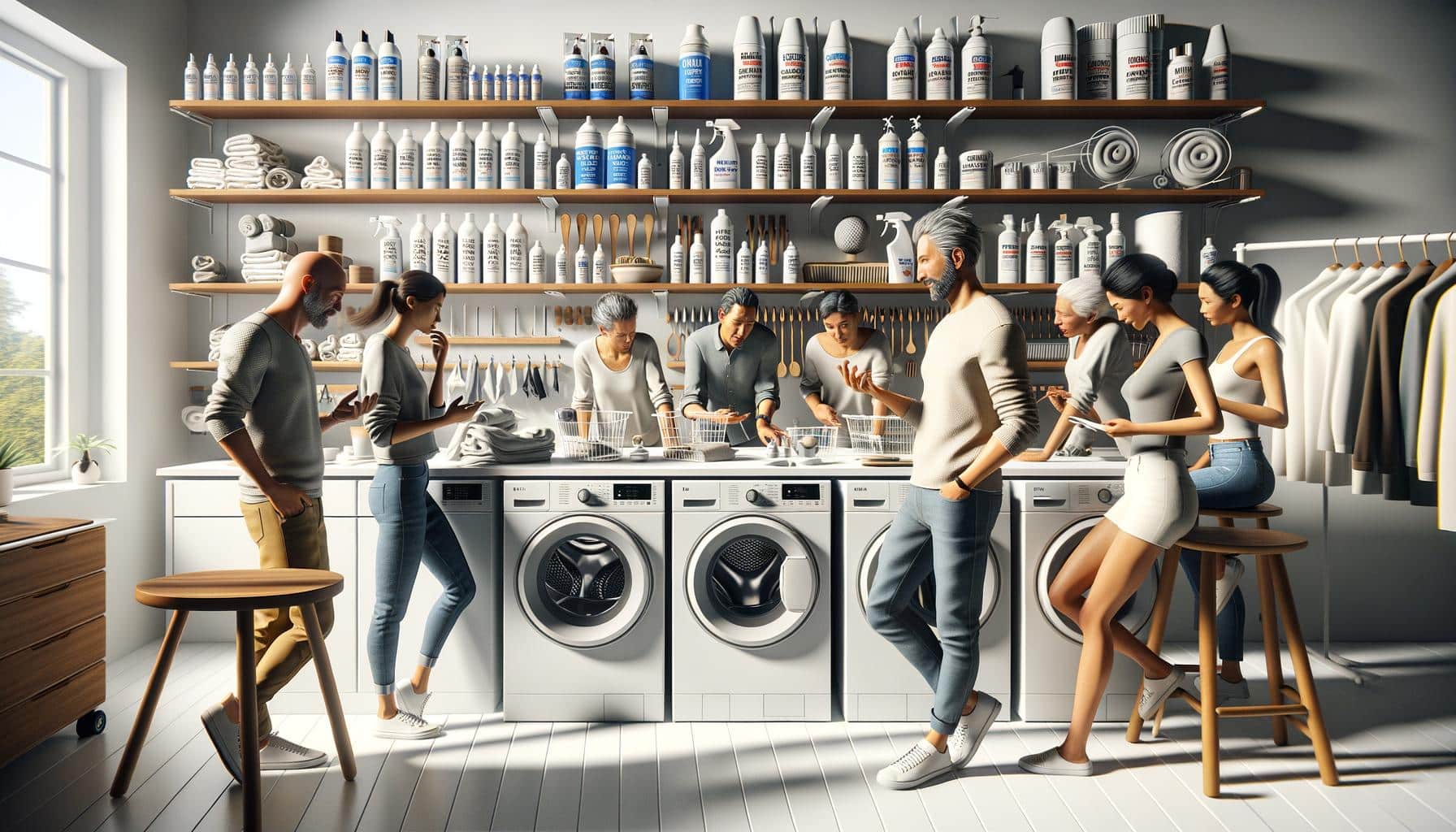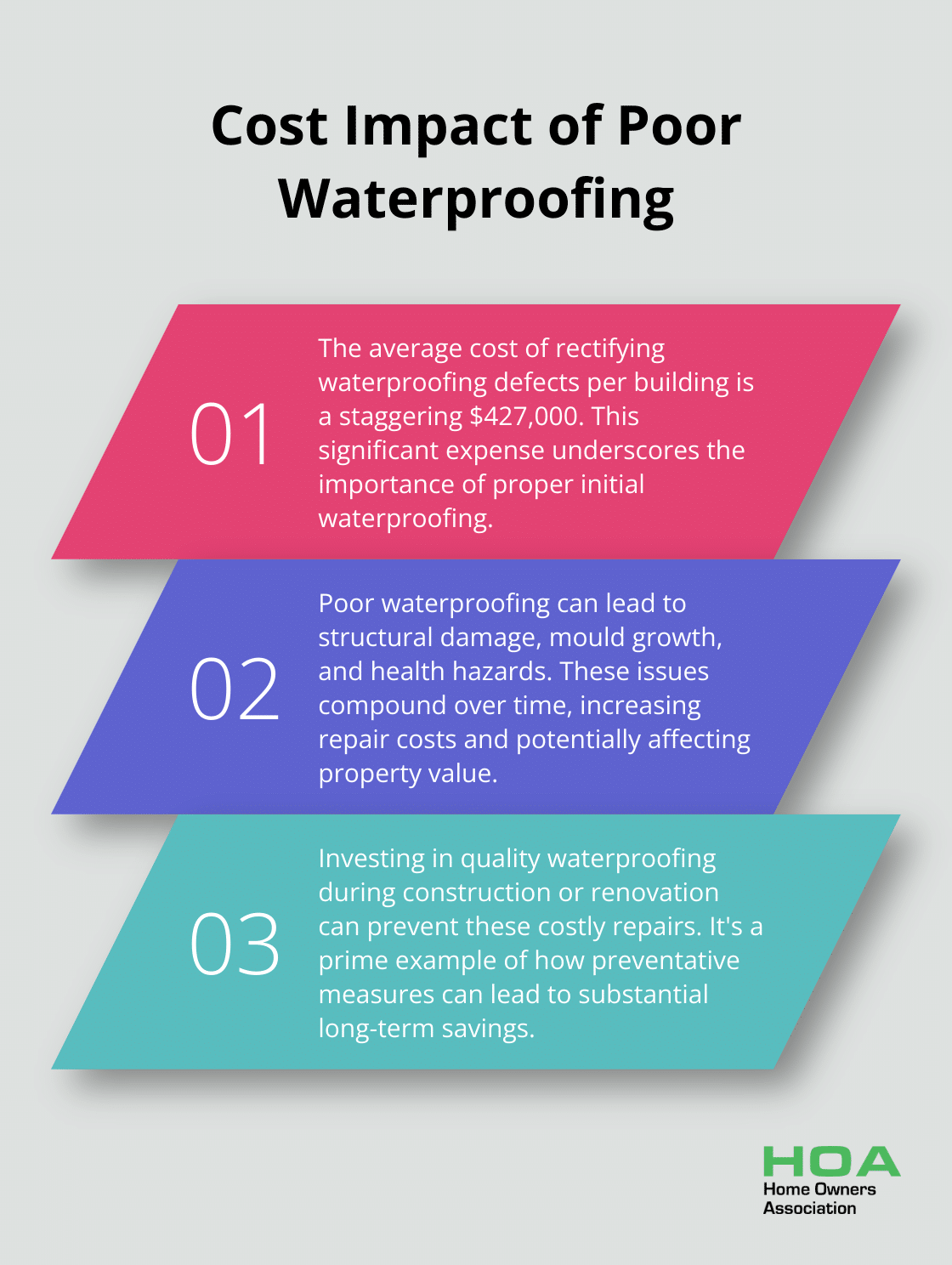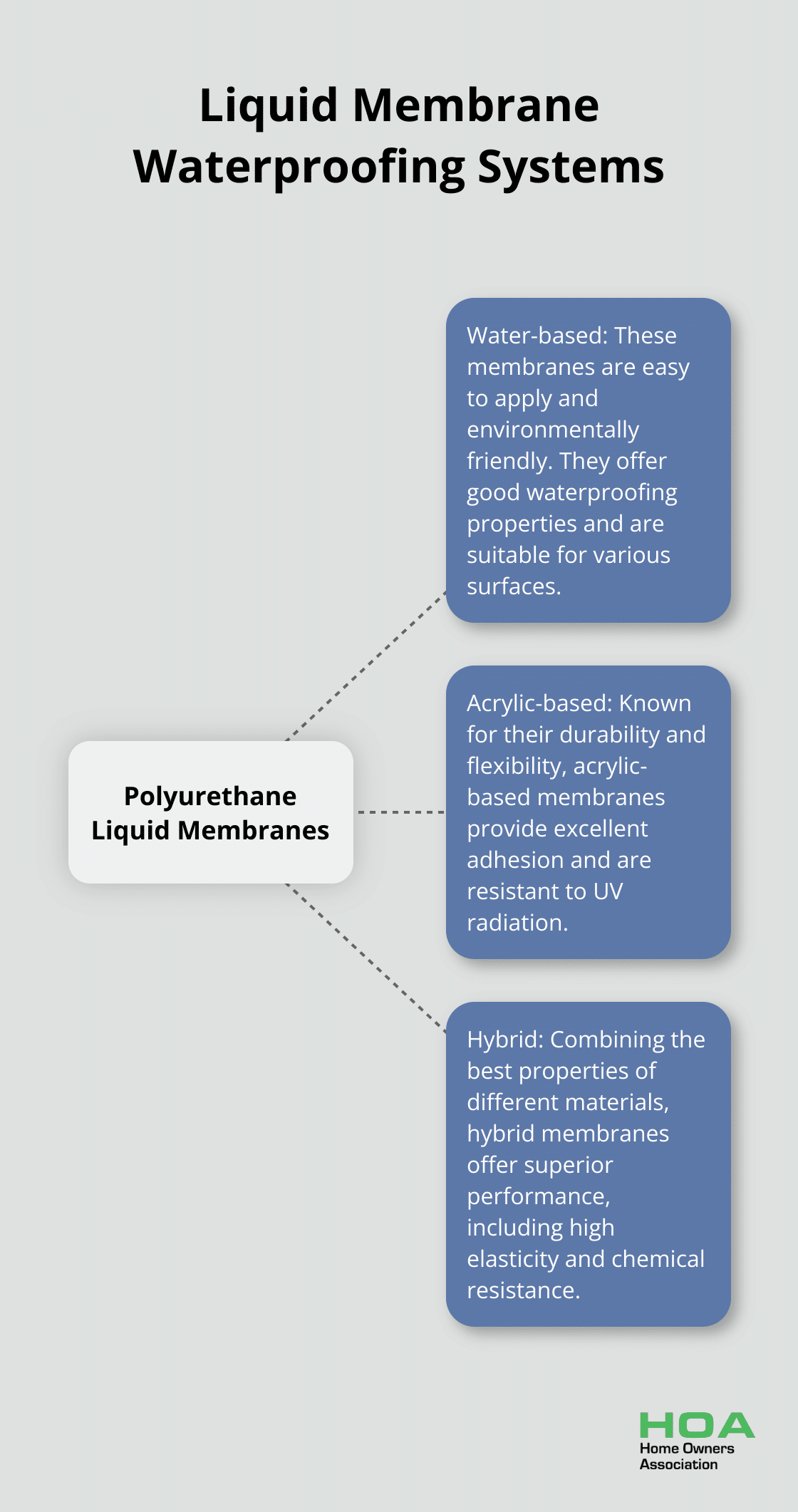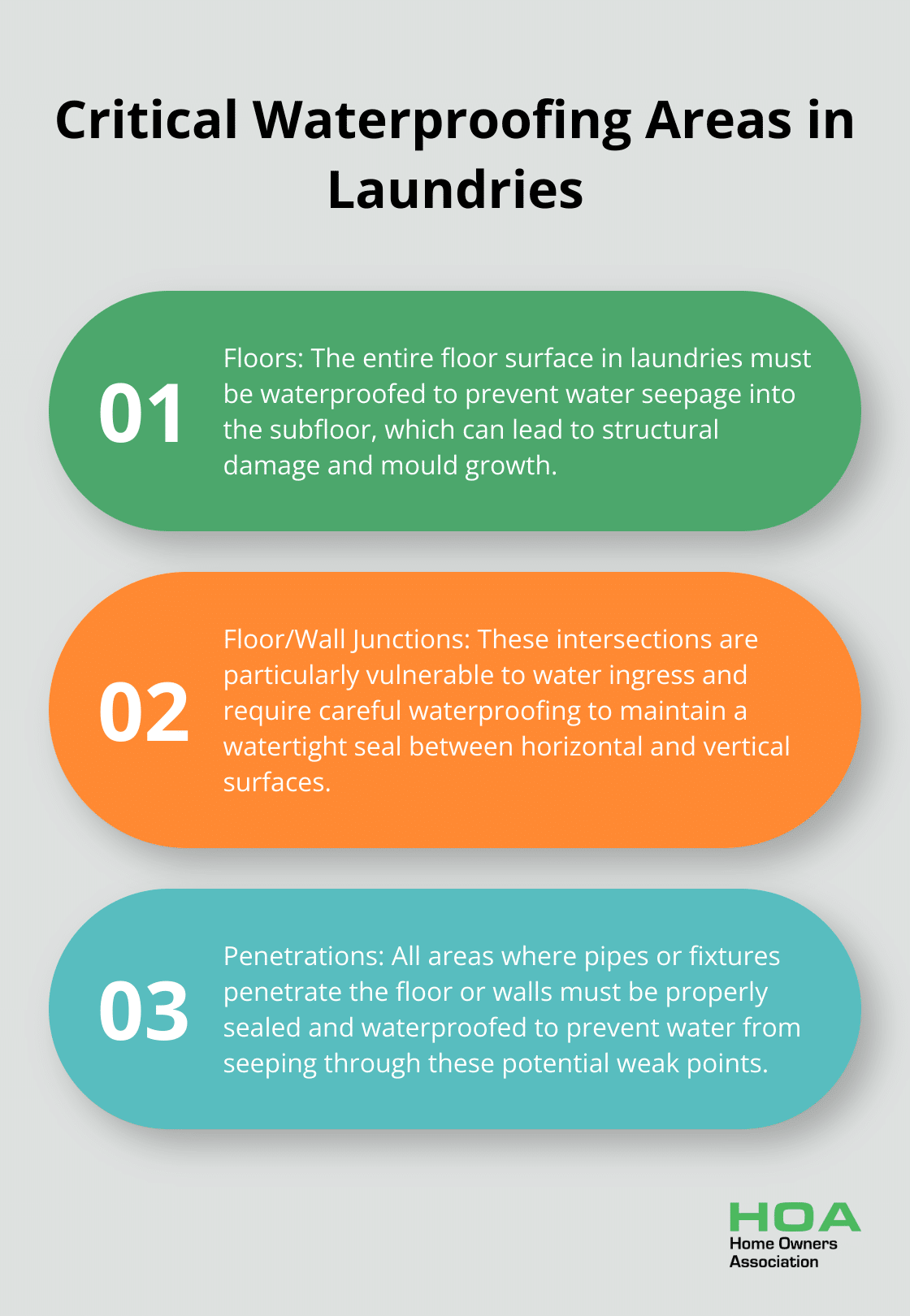
At Home Owners Association, we understand the critical role of laundry waterproofing in protecting your home.
Water damage from laundry areas can lead to costly repairs and health hazards if left unchecked.
This guide will walk you through essential steps to safeguard your laundry space, preventing structural damage and mould growth.
By implementing these waterproofing techniques, you’ll ensure a safer, drier home for years to come.
Why Laundry Waterproofing Matters
Protecting Your Home’s Foundation
Laundry waterproofing isn’t a luxury; it’s a necessity for every Australian home. Water damage from poorly waterproofed laundries can compromise your home’s structural integrity. A complete and up-to-date version of the Australian Building Codes can be found on the Australian Building Codes Board website. Proper waterproofing of your laundry doesn’t just protect a single room – it safeguards your entire home.
Avoiding Expensive Repairs
Neglect of laundry waterproofing often leads to costly repairs. The average cost of rectifying waterproofing defects per building was around $427,000. This figure doesn’t account for potential loss of personal belongings or the inconvenience of living in a damaged home.

Combating Mould and Mildew
Poor waterproofing creates an ideal environment for mould and mildew growth, which pose serious health risks. The National Asthma Council Australia reports that mould exposure can worsen asthma symptoms and cause respiratory issues, even in healthy individuals. Effective waterproofing helps maintain a dry, healthy living space.
Preserving Property Value
A well-maintained, properly waterproofed laundry significantly impacts your property’s value. Real estate experts estimate that visible water damage can decrease a property’s value by 5-15%. Quality waterproofing protects both your home and your investment.
Ensuring Long-Term Peace of Mind
Waterproofing your laundry provides long-term peace of mind. You’ll sleep better knowing that your home is protected from water damage, mould growth, and structural issues. This preventative measure saves you from future stress and financial burden.
The importance of laundry waterproofing cannot be overstated. It protects your property, your health, and your finances. Now that we understand why it matters, let’s explore the essential steps for effectively waterproofing your laundry. Our next section will equip you with the knowledge needed to tackle this important task.
Waterproofing Your Laundry Step by Step
Assess Your Laundry’s Vulnerabilities
Start with a thorough inspection of your laundry room. Look for signs of existing water damage, such as peeling paint, warped flooring, or musty odours. Focus on areas around plumbing fixtures, washing machine connections, and any windows or external walls. These are common weak points where water can infiltrate.
Examine the overall layout of your laundry. Check for proper ventilation and any slopes in the flooring that might direct water away from drains. Understanding these factors will help you plan your waterproofing strategy more effectively.
Choose the Right Waterproofing Products
The selection of appropriate waterproofing materials is key for long-lasting protection. For floors, a liquid membrane waterproofing system often provides the most effective choice. Polyurethane is a highly popular liquid waterproof membrane that can be in the form of a water-based, acrylic-based or even a hybrid type product.

For walls, use a waterproof paint or membrane. Products like Crommelin’s Wetite Waterproofing Membrane (specifically designed for wet areas) offer excellent protection against moisture.
When sealing joints and corners, a high-quality silicone sealant is essential. Look for products that are mould-resistant and compatible with the surfaces in your laundry.
Apply Waterproofing Solutions
Before applying any waterproofing products, clean all surfaces and ensure they are dry and free from dust or debris. Treat all joints, corners, and areas around fixtures with a waterproof sealant. This creates a watertight seal at these critical points.
Apply your chosen waterproofing membrane to the floors and walls. Follow the manufacturer’s instructions carefully, paying attention to recommended thickness and drying times. Most membranes require multiple coats for optimal protection.
For added security, extend the waterproofing membrane at least 150mm up the walls from the floor. Building elements in wet areas within a building must be protected with a waterproofing system.
Improve Drainage and Ventilation
Proper drainage prevents water accumulation. Ensure your laundry floor has a slight slope towards the drain. If necessary, install a new floor waste with a wider grate to improve water flow.
Ventilation plays a crucial role in preventing moisture buildup. Install an exhaust fan if you don’t already have one. This will help remove excess humidity and reduce the risk of mould growth.
Don’t forget about your washing machine connections. Use high-quality, braided stainless steel hoses and check them regularly for signs of wear or leaks.
While DIY waterproofing can be effective, complex issues may require professional assistance. Home Owners Association members can access expert advice and discounts on waterproofing materials, making the process more manageable and cost-effective. Now that you’ve learned how to waterproof your laundry, let’s explore the key areas that require special attention during this process.
Critical Waterproofing Zones in Your Laundry
Floor-to-Wall Junctions
The intersection where floors meet walls presents a prime spot for water infiltration. Apply a flexible sealant along this junction before laying your waterproof membrane. This creates a watertight barrier that accommodates your home’s natural settling.
Install coving-a rounded edge that smoothly transitions from floor to wall-for enhanced protection. This not only improves waterproofing but also simplifies cleaning. Where floor wastes are provided for drainage of floors in bathrooms and laundries, the floors, floor/wall junction and penetration must be waterproof.

Plumbing Penetrations
Pipes and drains constitute potential weak points in your laundry’s waterproofing system. Each penetration through floors or walls requires special attention. Use high-quality, waterproof sealants around these areas. For larger gaps, consider use of expanding foam sealants before applying your waterproof membrane.
Inspect washing machine connections regularly for signs of wear and replace hoses every 3-5 years (even if they appear fine). Using braided stainless steel hoses can significantly reduce the risk of bursts.
Appliance Placement
Strategic placement of your washer and dryer prevents water damage. Install a drip tray under your washing machine to catch potential leaks. Ensure it’s large enough to contain a significant spill (at least 5cm larger than your appliance on all sides).
For front-loading washers, raise them slightly off the ground. This allows for easier detection of leaks and prevents water from pooling underneath. A sturdy platform or purpose-built pedestals work well for this purpose.
Windows and Outer Doors
If your laundry has windows or outer doors, these areas require extra attention. Use sealants compatible with the waterproofing membrane without damaging the waterproofing system. For older windows, consider upgrading to double-glazed options which offer better moisture resistance.
Thorough waterproofing of these critical areas in your laundry creates a space that’s easier to maintain and more pleasant to use. Focus on these key zones to significantly enhance the longevity and functionality of your laundry room.
Final Thoughts
Laundry waterproofing protects your entire home from water damage, mould growth, and costly repairs. This investment in your property’s longevity and your family’s well-being provides invaluable peace of mind. Regular maintenance and annual inspections will ensure long-term protection for your laundry area.
Home Owners Association offers members in Melbourne, Australia access to trade pricing and discounts on waterproofing materials. We also provide expert advice to guide you through the process, ensuring your project meets high quality standards and complies with local regulations. Our personalised support helps you create a safer and more valuable home.
Take action now to prevent water damage before it occurs. Plan your laundry waterproofing project today and protect your home for years to come. Your future self will appreciate the foresight and effort you put into safeguarding your laundry (and by extension, your entire home).





